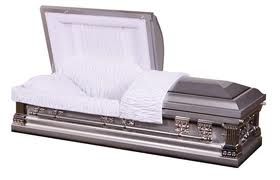How To Stop Customers From Fixating On Price
Equalize Price Points to Crystallize Personal Relevance.
This is the first recession to show a measurable impact on DeathCare. Most surprising have been the many reports from rural and “rustbelt” funeral directors that cremation has recently spiked, not because people in their markets want cremation but BECAUSE THEY CAN’T AFFORD BURIAL. YIKES!!!!
A recent article in Harvard Business Review entitled “How To Get Your Customers to Stop Fixating on Price” outlined 4 strategies. I found the most appealing strategy to be: Equalize Price Points to Crystallize Personal Relevance. The article’s authors pointed out that in :
“most mature markets customers have become unresponsive to marginal changes in value. They have lost interest in how each product option might serve them… [so] they default to price minimization. In fact, (and this was interesting) a list of options at different prices doesn’t make [consumers] examine the relative merits of those options, it activates their predisposition to pare the price.” [emphasis mine]
Not a week after reading the article I found myself experiencing the very strategy I liked the most and it was exciting.
I encountered a funeral director who had courageously narrowed his casket price offerings from a low of $1,100 to a high of less than $3,000. As I stood looking down a row of caskets I actually found myself saying (as if I were a consumer): “Wow, I can pretty much have anything I want.” Having been in so many selection rooms over my career, at first I was shocked. Then I found, to my amazement, a feeling of relief. Here is a picture:
1. Solid Mahogany Urn shaped, Velvet Interior $2,650 2. Brushed Copper, Velvet Interior $2,995 3. Solid Cherry, Urn shaped, Velvet Interior $2,550 4. 18 Ga round end brushed, Velvet $1,740. 5. Oak Veneer, Velvet Interior $1,845 6. 18 Ga two tone blue, square corner, Crepe interior $1,495 7. Stainless brushed velvet interior $2,150 8. L 98 Mandarin $1,150 9. 18 Ga Blue round end, crepe interior $1,575 10. Solid Cherry, Velvet Interior, $2,600.
As I surveyed the selection room above I found myself moving from thinking about what I could afford to which casket I liked best and which would be a good fit for me (just like the research said I would). And, as if I were an actual customer, I felt relief. Some years ago I picked a Pembroke Cherry for my prearrangements. At the time it sold for under $4,000. I watched it creep up above $5,000 but just figured that was inflation. When it went over $6,000 I made a mental note to find something cheaper.
Once a consumer realizes they can get pretty much whatever they want for just about the same price they move from thinking about what they can afford to what they want. The research found that this allowed sellers to price above their normal average.
The implication is this: Let’s say that your average casket and service sale is running about $7,500 and the range of caskets you are currently offering to reach that average is from $2,500 to $15,000. The concept of equalizing your price points would suggest that as you narrow your price range you could accomplish two things:
First, you would change the playing field for handling price shoppers and likely increase volume.
Second, you would (as the research found) be able to realize a higher over-all average casket and service sale on what you are currently serving (say from $7,500 to $8,000 for traditional burial).
Of course, this implies that you have exercised some aggressive tactics to control the wholesale cost of your caskets.
This post first appeared in The Creedy Commentary on June 22, 2010





